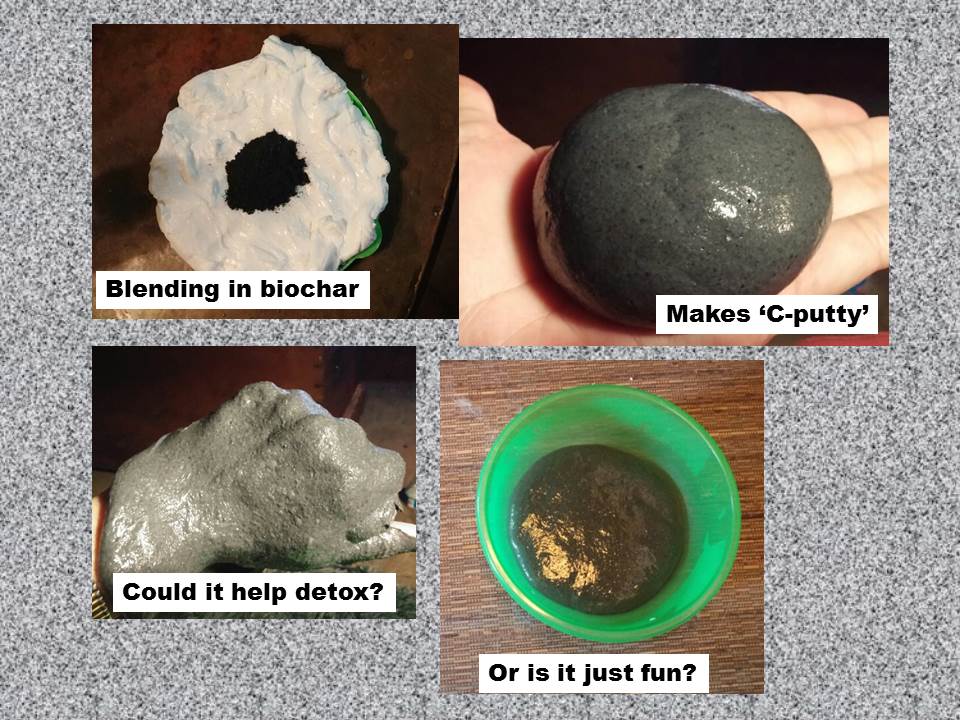DIY slime is all the rage these days. It’s fun and funny and just plain weird. You can kneed it, bounce it and break it over and over yet it always returns to a gelatinous blob. My teenage daughter has made all sorts of variations of this easy-to-make polymer using just three simple ingredients: glue, borax and shaving cream. It’s the XXI century version of silly putty which is made with just two ingredients: silicone oil and boric acid. As I have an insatiable desire to add biochar to almost everything, I decided to fold in some char to my first attempt of DIY slime. The pictures show the slime before and after adding char (I used particle size <1/20” and a lot more char than is shown in the picture). It is rather beautiful especially compared to the bland, milky-white pre-char substance.
But might it have any practical value? The inventor of silly putty asked this question for years and the best they came up with was a toy; a multi-million dollar toy mind you, but still just a toy. Might there be some benefit to adding carbon to this particular polymer? After adding biochar to various materials, my next favorite thing to do is chat with Master Google about big questions such as this, so off I went on my cyber quest. Lo and behold researchers in Dublin recently blended graphene, biochar’s more sophisticated and expensive carbon cousin, with homemade silly putty. Alas my idea was not so crazy – nor original! Dubbed ‘g-putty’, this polymer turns out to be a highly sensitive sensor which may just have bio-medical applications. Researchers claim that g-putty could, amongst other possible uses, be used to track human vital signs. Its ability to conduct electricity is what appears to be the basis for its high level of sensitivity. Fascinating!
One thing I’ve pondered ever since a good friend battled chemo-induced neuropathy is whether biochar could somehow help expunge or pull out the toxins pumped into the body during chemotherapy. Could char putty draped around the affected limbs help detoxify their systems once the chemo has done its duty? Would magnetized biochar, the new darling for sorbing heavy metals and other toxins, make this work? Or are the pores clogged with the other substances in the char putty?
Therapy putty is already ‘a thing’. Its prescribed for those with anxiety. But perhaps char putty could reduce more than anxiety. It’s worth considering. Hears to hoping this not-so crazy idea might inspire a few researchers to put this putty through its paces!


